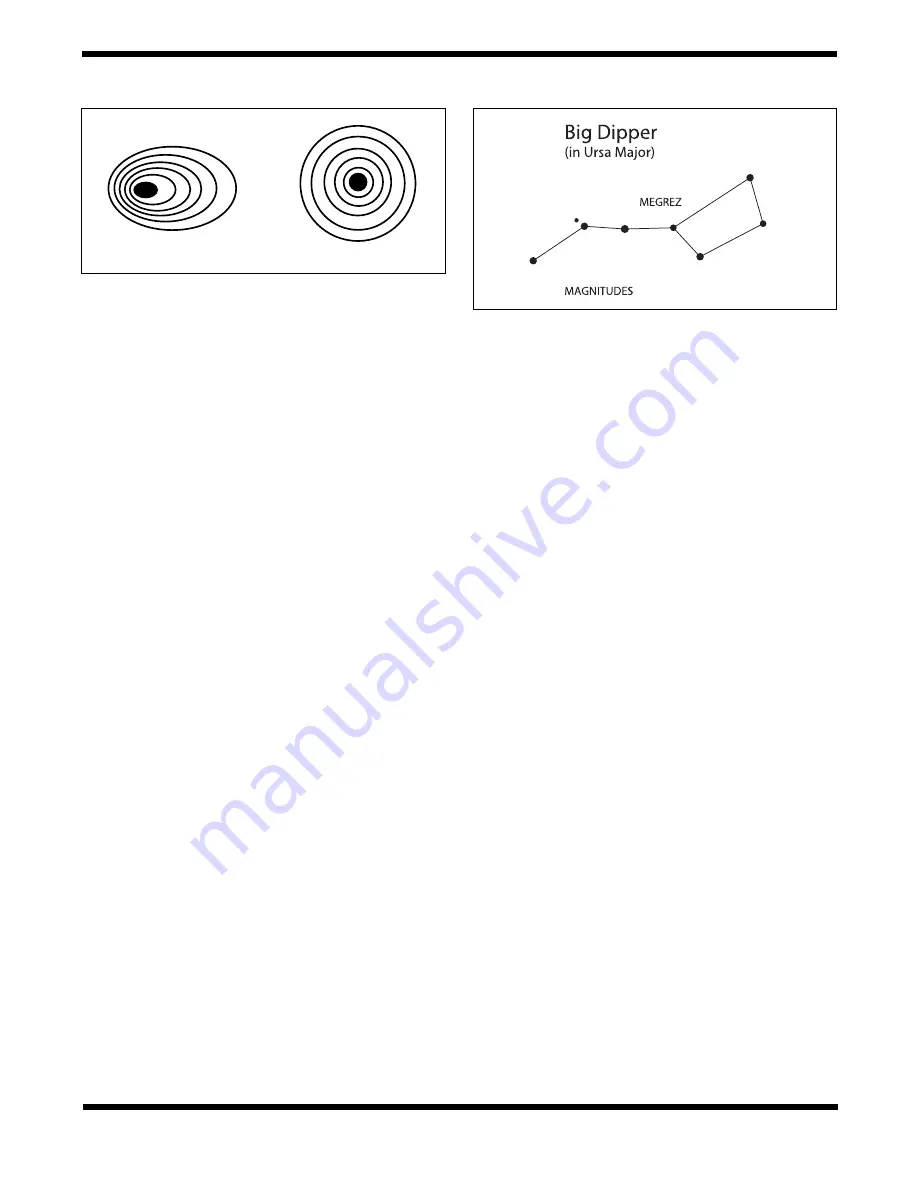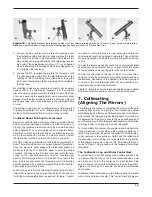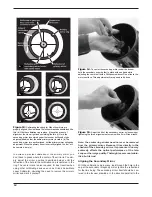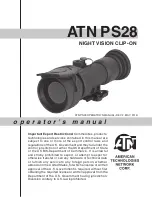
the image with the focusing knob. If the telescope is correctly
collimated, the expanding disk should be a perfect circle
(Figure 18). If the image is unsymmetrical, the scope is out of
collimation. The dark shadow cast by the secondary mirror
should appear in the very center of the out-of-focus circle, like
the hole in a doughnut. If the “hole” appears off-center, the tel-
escope is out of collimation.
If you try the star test and the bright star you have selected is
not accurately centered in the eyepiece, then the optics will
always appear out of collimation, even though they may be
perfectly aligned. It is critical to keep the star centered, so
over time you will need to make slight corrections to the tele-
scope’s position in order to account for the sky’s apparent
motion.
8. Astronomical Observing
For many users, the SkyView Pro 6LT EQ telescope will be a
major leap into the world of amateur astronomy. This section
is intended to get you ready for your voyages through the
night sky.
Observing Tips
A. Site Selection
Pick a location away from street lights and bright yard lighting.
Avoid viewing over rooftops and chimneys, as they often have
warm air currents rising from them, which distort the image
seen in the eyepiece. Similarly, you should not observe
through an open window from indoors. Better yet, choose a
site out-of-town, away from any “light pollution”. You’ll be
stunned at how many more stars you’ll see! Most importantly,
make sure that any chosen site has a clear view of a large
portion of the sky.
B. Seeing and Transparency
Atmospheric conditions play a huge part in quality of viewing.
In conditions of good “seeing”, star twinkling is minimal and
objects appear steady in the eyepiece. Seeing is best over-
head, worst at the horizon. Also, seeing generally gets better
after midnight, when much of the heat absorbed by the Earth
during the day has radiated off into space. Typically, seeing
conditions will be better at sites that have an altitude over
about 3000 feet. Altitude helps because it decreases the
amount of distortion causing atmosphere you are looking
through.
A good way to judge if the seeing is good or not is to look at
bright stars about 40° above the horizon. If the stars appear
to “twinkle”, the atmosphere is significantly distorting the
incoming light, and views at high magnifications will not
appear sharp. If the stars appear steady and do not twinkle,
seeing conditions are probably good and higher magnifica-
tions will be possible. Also, seeing conditions are typically
poor during the day. This is because the heat from the Sun
warms the air and causes turbulence.
Good “transparency” is especially important for observing
faint objects. It simply means the air is free of moisture,
smoke, and dust. All tend to scatter light, which reduces an
object’s brightness.
One good way to tell if conditions are good is by how many
stars you can see with your naked eye. If you cannot see stars
of magnitude 3.5 or dimmer then conditions are poor.
Magnitude is a measure of how bright a star is, the brighter a
star is, the lower its magnitude will be. A good star to remem-
ber for this is Megrez (mag. 3.4), which is the star in the “Big
Dipper” connecting the handle to the “dipper”. If you cannot
see Megrez, then you have fog, haze, clouds, smog, light pol-
lution or other conditions that are hindering your viewing (See
Figure 19).
C. Cooling the Telescope
All optical instruments need time to reach “thermal equilibri-
um” to achieve maximum stability of the lenses and mirrors,
which is essential for peak performance. When moved from a
warm indoor location outside to cooler air (or vice-versa), a
telescope needs time to cool to the outdoor temperature. The
bigger the instrument and the larger the temperature change,
the more time will be needed.
Allow at least 30 minutes for your SkyView Pro 6LT EQ to
equilibrate. If the scope has more than a 40° temperature
adjustment, allow an hour or more. In the winter, storing the
telescope outdoors in a shed or garage greatly reduces the
amount of time needed for the optics to stabilize. It also is a
Figure 18.
A star test will determine if a telescope’s optics are
properly collimated. An unfocused view of a bright star through the
eyepiece should appear as illustrated on the right if the optics are
perfectly collimated. If the circle is unsymmetrical, as in the
illustration on the left, the scope needs collimation.
Figure 19.
Megrez connects the Big Dipper’s handle to it's
“pan”. It is a good guide to how conditions are. If you can not see
Megrez (a 3.4 mag star) then conditions are poor.
14
Out of collimation
Collimated
2.4
1.7
3.4
2.4
4.9
1.9
1.9
2.5
Summary of Contents for SKYVIEW PRO 6LT EQ 9872
Page 19: ...19 ...


























